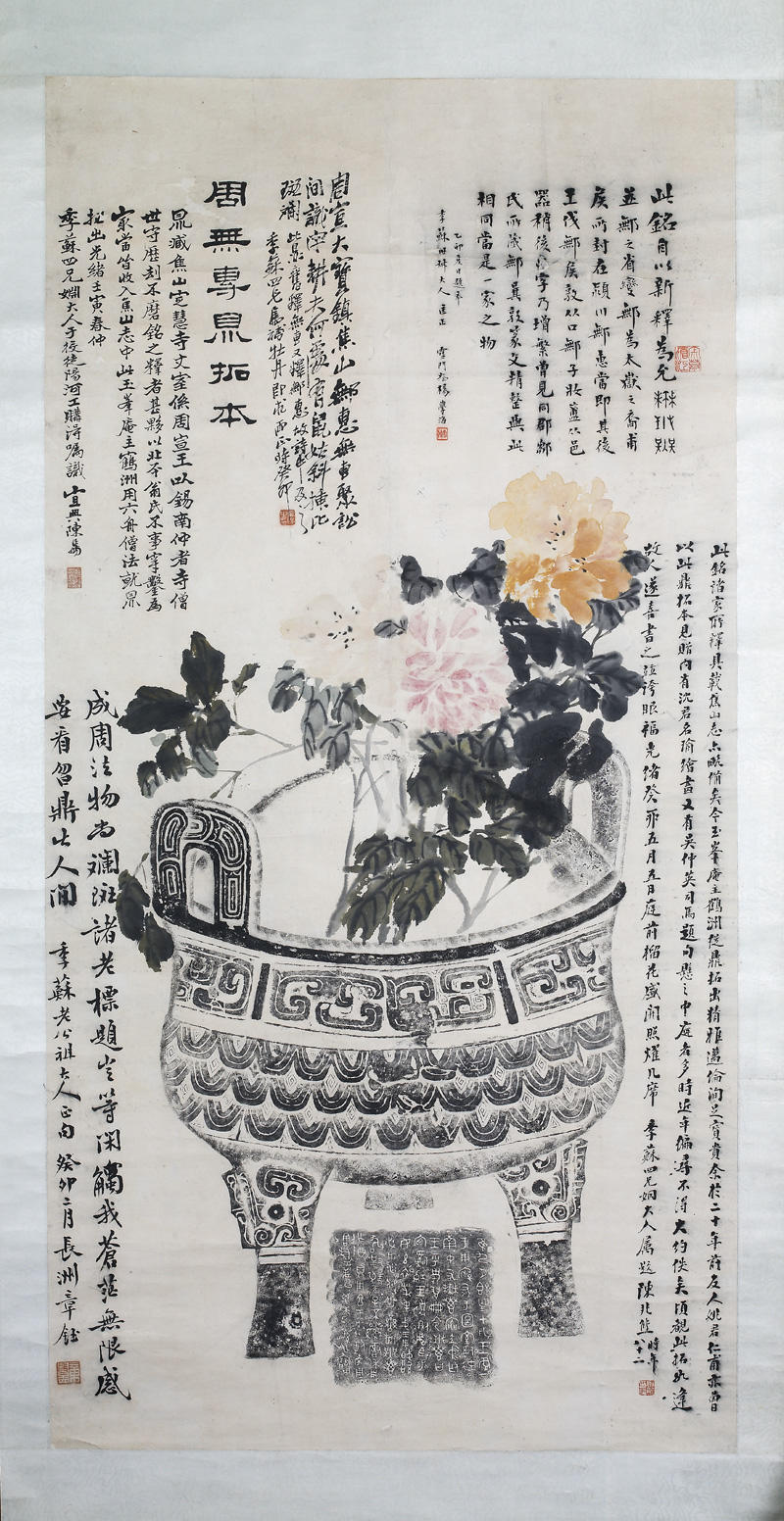Iraq’s ancient past exhibit
The gold bull amulet shown in the picture below is an ancient molding discovered in Iraq by archeologists. On the right side of the object are two suspension loops. It is believed that the object was once attached to gold a necklace. The object was found alongside Lapis Lazuli and carnelian beads. These objects are believed to have originated from a plundered tomb. The object is made up of a bitumen mold engulfed in thin sheets of gold. Its body is fully rounded, and the legs tucked up on the side of the animal. As seen on the picture, the head is turned out at right angle facing the viewer.

With respect to the Epic of Gilgamesh, the object represents the theme of masculinity. In most ancient civilizations, the symbols of bull represented masculinity (George, 2003). Ancient Sumerians and Egyptians believed that the bull was the most masculine animal. In the ancient book, its main character is portrayed as a hero. Gilgamesh is as a tough masculine individual who is liken with the bull. He is an impressive conqueror with fine looks. In the story, the image of the bull is portrayed numerously to represent Gilgamesh’s power. As Gilgamesh and Enkidu were heading towards the Cedar Jungle, Gilgamesh had a vision. In the dream, he saw a bull like image, which broke the earth with its breath. From the vision, Enkidu deduced that the gods were going to help them win a battle against Humbaba.
Ashmolean Museum exhibit

The object shown in figure 2 is a script believed to be more than two thousand years old. Since its discovery, the script has become very popular all over the world. It is believed that the script originated from the Shang dynasty that existed in China between 1600 and 1050 BC. The writing styles contained in the picture still appear in some modern works. This represents the theme of the impact of the past on the present.
In Persepolis, the impact of the past on the present is a major theme (Satrapi, 2007). Throughout the novel, Marjane believes that the past Iranian conflicts are to be blamed for the modern challenges faced in the country. In the introductory part of the book, she categorizes herself with the renowned Iranian rulers dating back to the 1st century (Satrapi, 2007). She envisages herself as an icon of peace and love. When the conflict between Iraq and Iran began, Marjane supports it as a fair initiative. She likens the war with the quarrel that has existed between the Arabs and the Persians for more than 1000 years. Throughout the novel, the effects of the past on the present life are illustrated through Marjane’s, who believes that the current and the future events can be deduced from history. According to her, the political bigotry and religious fundamentalism are the products of the effects of the past on the present life (Satrapi, 2007).
Gilgamesh
Gilgamesh influences my understanding of the past in numerous ways. Through his deeds, I can recall how the ancient inhabitants of Mesopotamia behaved (George, 2003). In the story of Gilgamesh, several creatures have been associated with supernatural beings. This implies that the earliest inhabitants of Mesopotamia worshiped idols. These idols were in forms of creatures such as bulls, frogs, and human like figures.
Gilgamesh’s behavior illustrates how human relationships and feelings were perceived in the ancient Mesopotamia. By analyzing, the relationships that existed between Gilgamesh and other individuals mentioned in the text such as Enkidu we would be able deduce the cultures and religion of the ancient Mesopotamia inhabitants.
The birth of Venus

The above picture describes a legendary episode found in classical mythologies. The picture was painted by Alexandre Cabanel in the year 1863.The theme of the painting was very popular during the Canabel’s era, and it enabled painters to illustrate eroticisms in arts without compromising on the public morality. As such, the painting portrays a nude woman in a lustful pose. Through this piece of art, Canabel criticized the popular artistic approach, which had been adopted in Europe during the 19th century. During this period, artists had adopted different methods of idealizing human bodies.
In the painting, Canabel explores Greek cultures and recreates the painting depicting the anonymity with which beauty entered the earth. In addition, the childlike figures illustrated in the painting symbolize the birth of the goddess. The portrait illustrates how the 19th century cultures in Europe visualized the woman’s body. From the picture, it is apparent that the woman’s body was a subject of interest to many artists of the time. Through such ancient exhibitions, we can be able to reconstruct the culture of the individuals who created it.
References
George, A. R. (2003). The epic of Gilgamesh: the Babylonian epic poem and other texts in Akkadian and Sumerian. London: Penguin Books.
Satrapi, M. (2007). The complete Persepolis. New York: Pantheon Books.